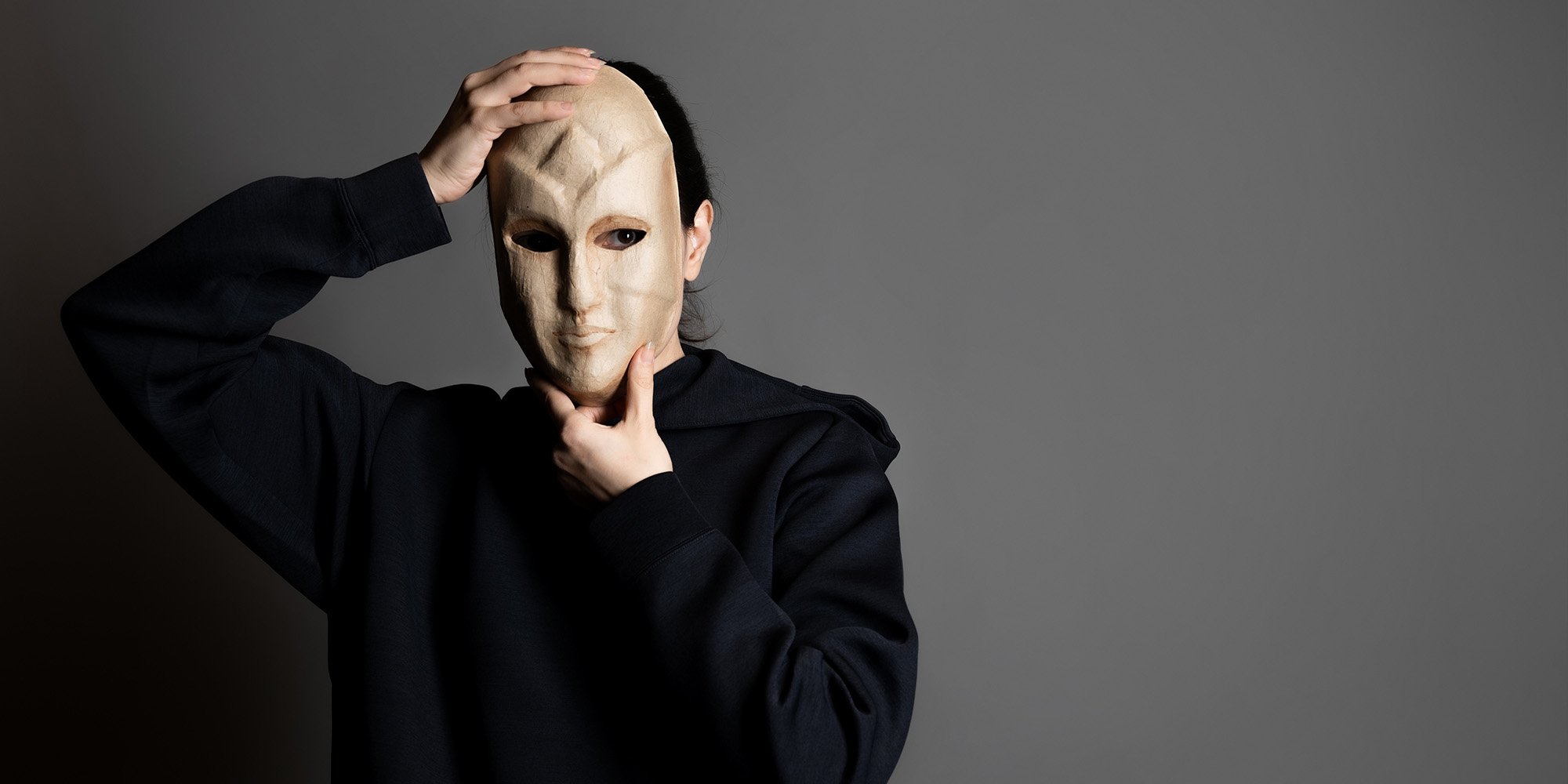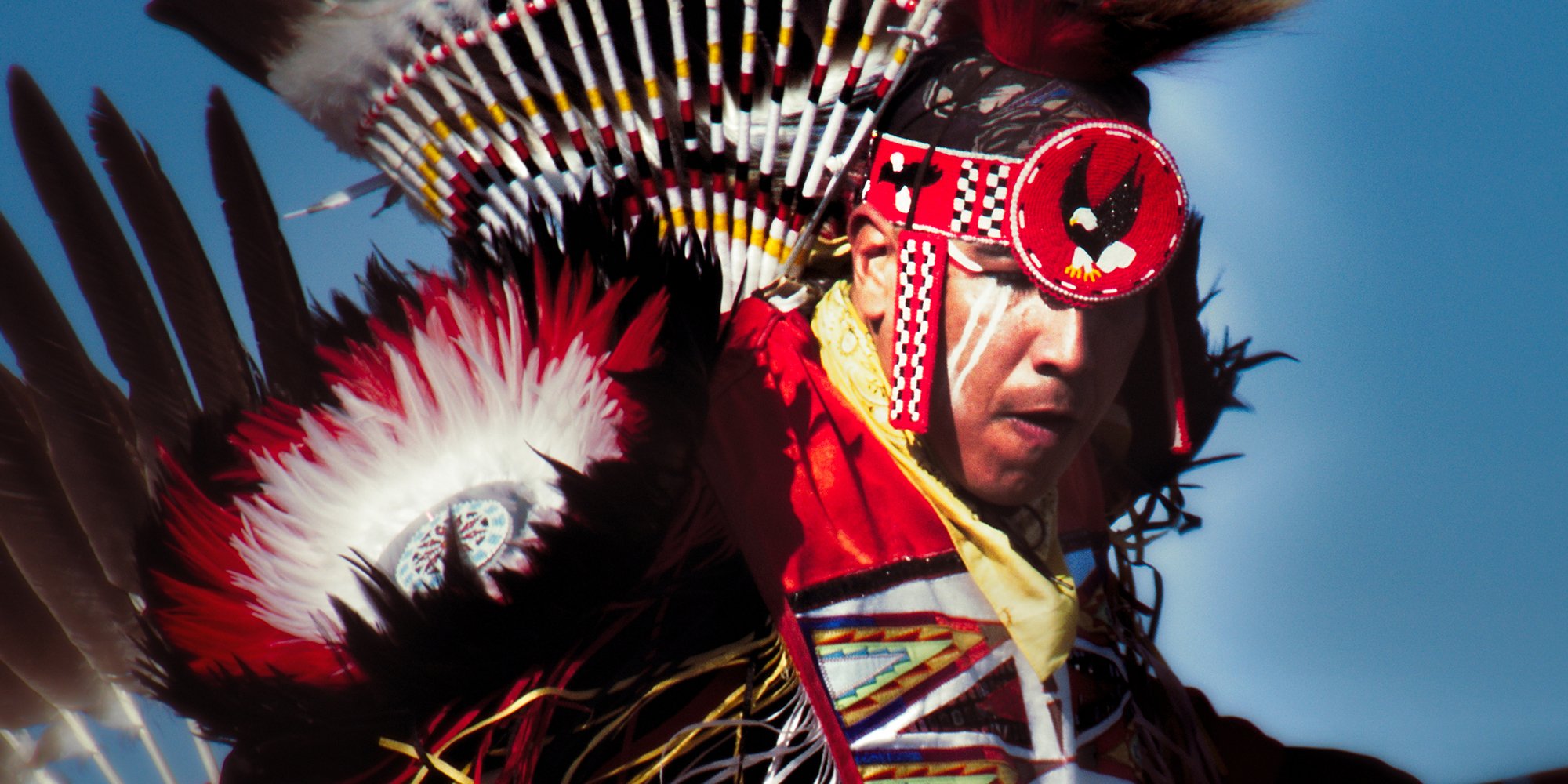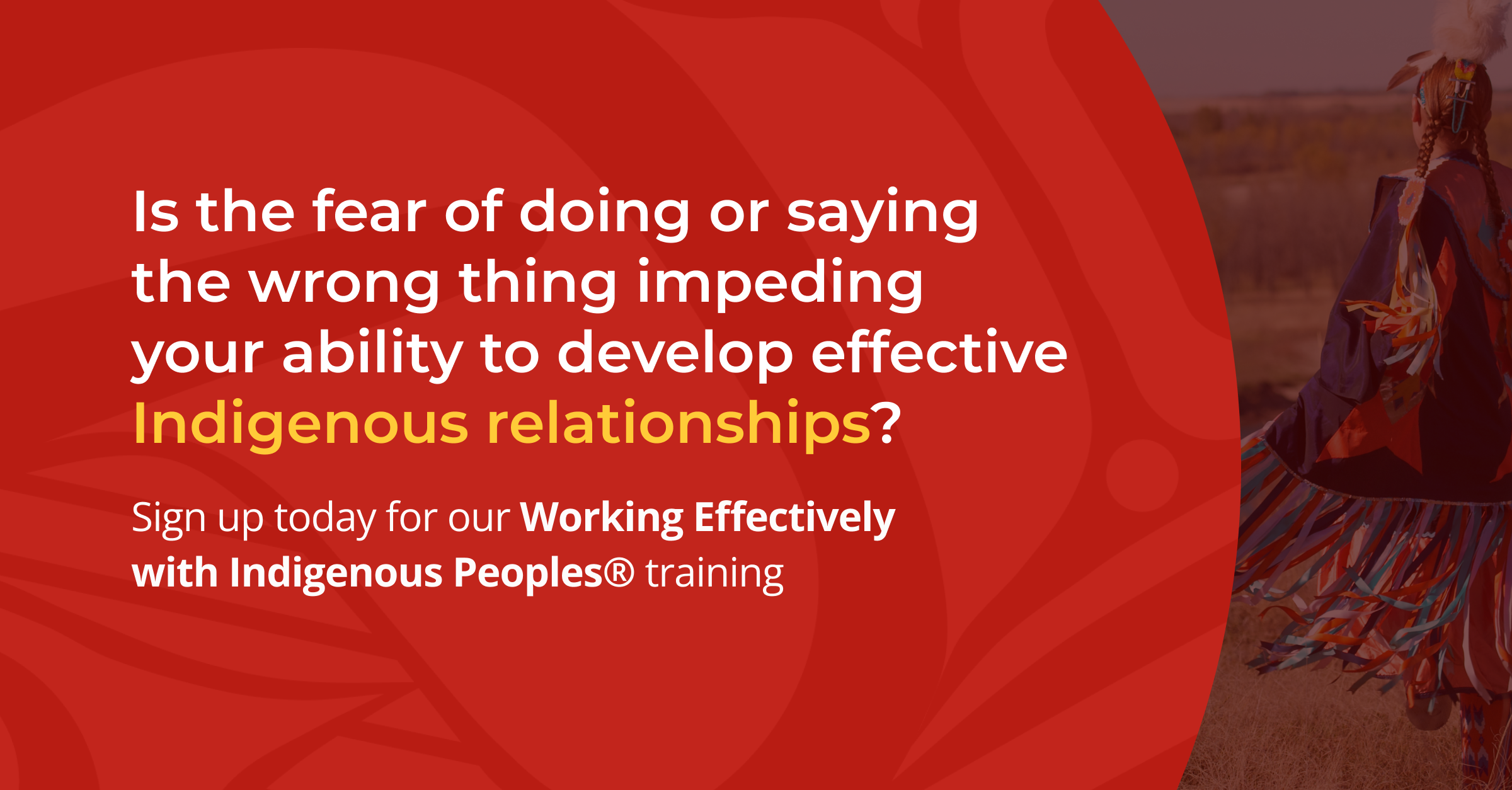
When we prepare an article for our blog, Working Effectively with Indigenous Peoples®, we put considerable thought into the title - how will it resonate with readers, and how will it perform in search engine optimization? Our goal with the blog and the articles is to help change the world, one reader/learner at a time, so we want to reach as many people as possible (we are making progress as the blog just celebrated a milestone of ten million views).
For this article, we were undecided as to which label to use:
- Pretendians - sounds like a kids’ game, like “let’s play Indian”
- Indigenous identity fraudsters - accurate
- Raceshifters - too close to shapeshifters
- Wannabes - the colloquial often used by Indigenous people
Of the four, it was narrowed down to pretendians or Indigenous identity fraudsters. We wanted to go with Indigenous identity fraudster because the definition of fraud is “wrongful or criminal deception intended to result in financial or personal gain.” We wanted to call a fraudster a fraudster.
But pretendians, which is far too soft for the harm done, is the term most commonly used in mainstream media and keyword searches. So, as our goal is to reach a wide audience, we are going with pretendians. Whatever they are called, their actions and the ripple effect of the impacts of their actions go well beyond the headline when they are exposed.
Over the past few years, some big-name pretendians have been exposed. Author Joseph Boyden (2016), director Michelle Latimer (2020), Professor Carrie Bourassa (2022), Judge Mary-Ellen Turpel-Lafond (2023) and Buffy Sainte-Marie (2023). Each of these received awards, accolades, honour, and prestige - they were heralded as the darlings of their genre and often seen as spokespeople for the cause. Once exposed, however, their journey from famous to infamous was fast and furious. After a period of righteous indignation and self-defence, most disappeared quietly into the night. Some returned their awards, others did not. Some apologized, others did not. What they can never undo is the harm they caused Indigenous people.
The harm done:
- Pretendians take up grants, scholarships, jobs and positions earmarked for Indigenous candidates.
- Pretendians steal the spotlight from genuine Indigenous artists and leaders.
- Pretendians capitalize on historical and ongoing trauma.
- Their actions further traumatize Indigenous people by cheapening their lived experience.
- They groom Elders as allies to verify authenticity.
- Elders are humiliated and embarrassed for being duped when the pretendian’s cover is blown.
- They coerce an Elder to spend time with them by offering payment when they know the funds are needed.
- When a pretendian wins the prize, gets the job, reaps the honours and accolades, and sells the books, music, and art, they do so by pushing legitimate Indigenous professors, judges, authors, artists, and musicians out of that space.
- Not winning the prizes, jobs, honours, accolades and money from sales changes the course of history for the Indigenous person they beat out.
- When a pretendian reaches the highest platform, they are heralded as mentors and role models, as examples that hard work and commitment mean anything is possible. When these role models and mentors are exposed, their fans and supporters feel anger—betrayal and sometimes a loss of hope.
- Students of fraudsters in academia are particularly affected as they are left questioning everything they learned.
- Pretendians occasionally become the darlings of the media and become the go-to people to speak with on all sorts of topics on behalf of Indigenous Peoples.
- The harm done by pretendians in academia is particularly insidious:
...the structural trickle-down of having non-Indigenous people with non-Indigenous community standpoints rising through the ranks to represent us and theorize Indigenous peoplehood, sovereignty, and (anti-)colonialism. These people become “thought leaders,” institutional decision-makers, and policy advisors to governmental leaders with regulatory and economic power over our peoples. They then shape academic and public discourse about who we allegedly are, what our lives allegedly look like, and what they think should be done about and to us. [1]
And we have a new pretendian phenomenon surfacing in the courts. In early 2024, a judge in BC warned of a “tsunami of Indigenous identity fraud cases heading to courts.” [2] Why? Because some facing criminal charges think if they can pull an Indigenous relative out of a hat, they will receive a lighter sentence due to the Gladue rights.
In 1996, Parliament amended the Criminal Code to include a provision (Section 718.2(e)) specifically directing courts to exercise restraint and to consider the particular situation of aboriginal persons as they formulated the sentence to be imposed for crimes committed by native offenders. [3]
In 1999, the Supreme Court of Canada went a step further and recognized the social, economic, and historical factors impacting Indigenous Peoples in the landmark R. v. Gladue (1999) and reaffirmed those factors in R. v. Ipeelee (2012). Non-Indigenous people pretending to be Indigenous to glean a lighter sentence was unlikely a scenario envisioned by the Supreme Court back in 1996 and 1999.
BC Provincial Court Judge David Patterson:
I am of the view that the only way to give meaning to the Supreme Court of Canada's teaching in Gladue and Ipeelee is for judges to be alive to the issue of Indigenous identity fraud and require some proof that satisfies the court that the person being sentenced is entitled to be sentenced as an Indigenous person. [4]
Pretendians capitalize on the intergenerational trauma endured by generations of Indigenous people. Typically, their fabricated backstory includes substance abuse by a parent, family violence, residential school trauma, adoption, and poverty. They present as “victims” who have struggled against all odds to succeed in a harsh and unfair world - the classic rags-to-riches story everyone loves.
They are banking on:
- Non-Indigenous people not understanding Indigenous relationships.
- Non-Indigenous people not detecting the flaws in their identity story.
- Non-Indigenous people are reluctant to question the validity of their identity story.
- The guilt of non-Indigenous people about the treatment of Indigenous people which became particularly acute following the Truth and Reconciliation Commission’s report and calls to action.
- The inner, continued belief in stereotypes.
Knowledge is power, so a good way to prevent your organization from being duped by someone posing as Indigenous is through education about Indigenous Peoples. Ensure your human resources staff, at the very least, are knowledgeable about Indigenous Peoples. Our Working Effectively with Indigenous Peoples® training provides a solid understanding of Indigenous history and how to have respectful, effective conversations and relationships with Indigenous Peoples. Another of our courses that would be of benefit is our Indigenous Employment: Recruitment & Retention.
A common flaw in a pretendian’s backstory that ultimately brings them down is their vague, often shifting self-identification as descendants of a long-dead Indigenous person from a particular nation. However, the nation claimed does not claim them. Pretendians overlook the critical role of citizenship, kinship and membership in identity. Their Eurocentric worldview is their downfall because they mistakenly lean on ancestry, not relationships.
Eurocentric worldview is about the individual, whereas the Indigenous worldview is about the collective:
Indigenous worldview: Society operates in a state of relatedness. Everything and everyone is related. There is a real belief that people, objects, and the environment are all connected. Law, kinship and spirituality reinforce this connectedness. Identity comes from connections. [5]
Citizenship, kinship and membership were the antithesis of the assimilation policies of the Indian Act. The Indian Act changed traditional names, moved communities from their traditional lands and lifestyles, removed children first through residential schools, then through the Sixties Scoop, and developed a registry based on a system of “Indianness” that further separated people, primarily women and their children, from their families and communities. This churn of identity over eight generations made possible the ease with which Indigenous identity fraudsters can craft their backstories.
The Indian Act erased self-determination, which is the vital power of a nation to determine its citizens. Apart from those nations that have moved away from the Indian Act and returned to self-government, the federal government decides who is “Indian enough” to live on a reserve and have access to housing, health care, and education. Most self-government agreements contain clauses on citizenship.
- The Indian Act vs Self-determination
- 21 Things® You May Not Know About the Indian Act
- 8 Key Issues for Indigenous Peoples in Canada
Self-determination is a right under the UN Declaration on the Rights of Indigenous Peoples.
Article 33
Indigenous peoples have the right to determine their own identity or membership in accordance with their customs and traditions. This does not impair the right of indigenous individuals to obtain citizenship of the States in which they live.
Now that Canada has adopted the UN Declaration on the Rights of Indigenous Peoples Act and as more nations undertake the hard work to return to self-determination and self-government and take control of who their people are, it won’t be so easy for non-Indigenous people to assume an Indigenous identity. And, as more non-Indigenous people educate themselves about Indigenous history, red flags in a pretendian's story will become readily apparent.
The issue and the harm done by pretendians is a much broader topic than what we’ve covered here. For a deep dive, look at “Indigenous Identity Fraud,” a report by Jean Teillet, IPC, OMN, MSC.
[1] Teillet Report on Indigenous Identity Fraud-October 2022
[2] Indigenous Worldviews vs Western Worldviews
[3] Law Now, Aboriginal Offenders, January 15, 2016
[4] 'Tsunami' of Indigenous identity fraud cases heading to courts, warns B.C. judge
[5] Indigenous Worldviews vs Western Worldviews
Featured photo: Shutterstock
Posts by Tag
- Indigenous Relations (90)
- Indigenous Awareness (77)
- History (75)
- Reconciliation (67)
- Arts and Culture (62)
- Indigenous Peoples (60)
- Indigenous Issues (51)
- Indigenous Consultation and Engagement (49)
- First Nations (36)
- Indian Act (34)
- Residential Schools (31)
- Education (28)
- Indigenous Rights (25)
- Health (23)
- Indigenous Economic Development (22)
- Famous Indigenous People (20)
- Environment (17)
- Videos (17)
- Government (16)
- Indigenous Recruitment and Retention (16)
- Terminology (16)
- Working Effectively with Indigenous Peoples (16)
- Allyship (15)
- Employment (15)
- Language (14)
- Law (14)
- Business (13)
- Spiritual Beliefs (13)
- Traditional Knowledge (13)
- Indigenous Self-Government (12)
- Treaties (11)
- Indigenous Protocol (10)
- Indigenous Consultation (9)
- Women (8)
- Inuit (7)
- Métis (7)
- Customs (6)
- Mental Health (6)
- National Indigenous Peoples Day (6)
- Sports (6)
- Veterans (6)
- Youth (6)
- Contributors (5)
- Forestry (5)
- Land Acknowledgement (5)
- UN Declaration on The Rights of Indigenous Peoples (5)
- Cultural Appropriation (4)
- Repatriation (4)
- Healing (3)
- Tourism (3)
- Court Cases (2)
- Elders (2)
- Generational Wounds (2)
- Indigenous Engagement (2)
- Indigenous Organizations (2)
- Mentor (2)
- Indigenous Procurement (1)
- Mothers (1)
- National Day of Truth & Reconciliation (1)
- TRC Calls-to-Action (1)
- Tips (1)

What Does Indigenous Awareness Mean?
Indigenous awareness is a broad term – I know because my onsite and public workshops are dedicated to helping people understand the full extent of...

Aboriginal Peoples Survey (2011) - A Snapshot
When reading statistics about the Aboriginal population in Canada, keep in mind that just as there is cultural diversity, there is also great...




